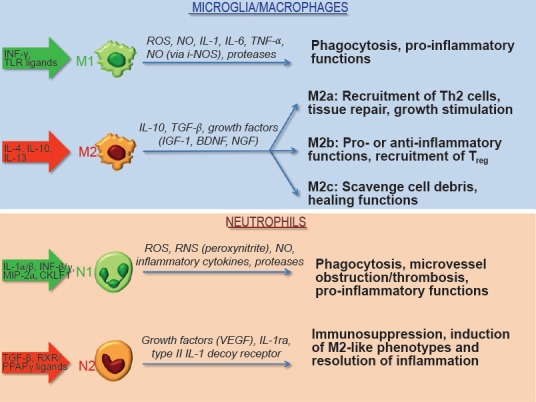Figure 1.

Polarization of innate immune cells and their function in stroke.
Various stimuli, including cytokines and certain receptor ligands, promote polarization of microglia/macrophages and neutrophils towards specific phenotypes. Based on their ability to release pro-inflammatory and detrimental mediators (M1 or N1 phenotypes) or immunomodulatory and pro-survival factors (M2 or N2 phenotypes), innate immune cells participate in the development of ischemic tissue damage or provide tissue healing and recovery especially during the late phases of the disease. BDNF: Brain-derived neurotrophic factor; CKLF-1: chemokine-like factor 1; IGF: insulin-like growth factor; IL: interleukin; IL-1ra: interleukin-1 receptor antagonist; INF: interferon; i-NOS: inducible nitric oxide synthase; MIP: macrophage inflammatory protein; NGF: nerve growth factor; NO: nitric oxide; PPAR: peroxisome proliferator-activated receptor; RNS: reactive nitrogen species; ROS: reactive oxygen species; RXR: retinoid X receptors; TGF: transforming growth factor; TLR: toll-like receptors; TNF: tumor necrosis factor; VEGF: vascular endothelial growth factor.
